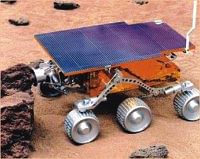Sci-Zone
By
Tawsif
 All
right. I'll be honest. With the GCE results finally out, and with
me surviving the guillotine by wee millimeters, I've been acting a
lot philanthropic lately. Mom's still using me for target practice,
mind you. (Thanks to the puny five percent I missed out in Maths.)
Other than that, it's a great relief realizing that I don't need to
rob a bank anymore in order to afford the tuition-fees for retaking
all the A Level courses. In which case I'm kind of assuming that robbing
a bank would be sufficient enough to quench the thirst of our oh-so-revered
teachers.
All
right. I'll be honest. With the GCE results finally out, and with
me surviving the guillotine by wee millimeters, I've been acting a
lot philanthropic lately. Mom's still using me for target practice,
mind you. (Thanks to the puny five percent I missed out in Maths.)
Other than that, it's a great relief realizing that I don't need to
rob a bank anymore in order to afford the tuition-fees for retaking
all the A Level courses. In which case I'm kind of assuming that robbing
a bank would be sufficient enough to quench the thirst of our oh-so-revered
teachers.
I shouldn't get
all chirpy, though. I still have twelve A2 papers in June, and thanks
to providence, I'll have to cover the whole syllabus in just about
two months. It's a wee bit tough, given that I still don't know what
the syllabus is.
I'm just hoping
that something will come up right before the exam. Like, I'll grow
wings and fly away. Or, my 'favourite' president will die of constipation
(which by the way has nothing to do with Edexcel, but otherwise, is
an event good enough to stop whining about the GCE)! Amen.
Moving on with
the column, NASA's Ames Research Centre is planning to develop a robotic
rover that can be used to hunt for the evidence of life on Mars. They're
already experimenting on Zoe, a robotic four-wheeler, which has mastered
the impossible of detecting the puniest form of life in the driest
place on Earth the nearly lifeless region at the heart of Atacama
Desert, Chile.
Zoe operated by
using fluorescent bio-markers. In other words, the rover had specially
formulated fluorescent-dyes, which glow a particular colour in the
presence of proteins, carbohydrates, membrane lipids, and nucleic
acids. These dyes were sprayed on the ground and then illuminated
by a brief flash. The rover cameras took short-exposure images to
detect the faint fluorescence, even under a broad daylight. The results
were then verified with those of the biologists, and found accurate.
Scientists believe
that if there's a life form in Mars, these robotic rovers are sure
to find it. Poor Martians! They'll have to find a new place to hide.
 Aspiring
car-maniacs might choke to death while reading this, but one of the
coolest four-wheelers designed in earth happens to have a breath-taking,
maximum speed of 60 centimeters per minute! Thankfully, it's expected
to run on Mars.
Aspiring
car-maniacs might choke to death while reading this, but one of the
coolest four-wheelers designed in earth happens to have a breath-taking,
maximum speed of 60 centimeters per minute! Thankfully, it's expected
to run on Mars.
Rover Sojourner
falls under the category of an 'autonomous vehicle', i.e. a robot
that can find its way and make some decisions without human help.
In some ways, Rover Sojourner is the secret behind the immense success
of Mars Pathfinder. This speedster (pun intended) operates under the
basis of X-ray spectrometry.
In other words,
it nuzzles against a target rock and emits alpha particles. Then it
reads the X-rays generated by the rocks. Since each element has its
'signature' X-ray, the spectrometer inside Sojourner doesn't have
a hard time determining the composition of the rocks.
Having said which,
the praise of the rover is only half-done. Although its route is determined
from earth, Rover Sojourner has to detect obstacles on its way, and
act accordingly. Often, the so-called obstacle just happens to be
a cliff, and not being able to detect it might jeopardize the entire
project. That's where the Sojourner's secret weapon, a nifto-dando
laser beam, comes in. The laser 'paves' a strip of light on the ground,
and a second device reads the reflection. The rover is also equipped
with a tilt gauge and touch sensors to help the process.
 When
the Mars surface is smooth a continuous strip of beam is obtained,
while in case of obstacles there are discontinuities. If there's a
cliff, the beam totally disappears. The little rover not only detects
obstacles, but can actually decide if it should go and bite the bullet,
or stop and ask for advice from earth!
When
the Mars surface is smooth a continuous strip of beam is obtained,
while in case of obstacles there are discontinuities. If there's a
cliff, the beam totally disappears. The little rover not only detects
obstacles, but can actually decide if it should go and bite the bullet,
or stop and ask for advice from earth!
With its 'power
to decide' and all, Rover Sojourner would have certainly decided to
commit suicide, had it ever run on the streets of Dhaka.
Till next week.
